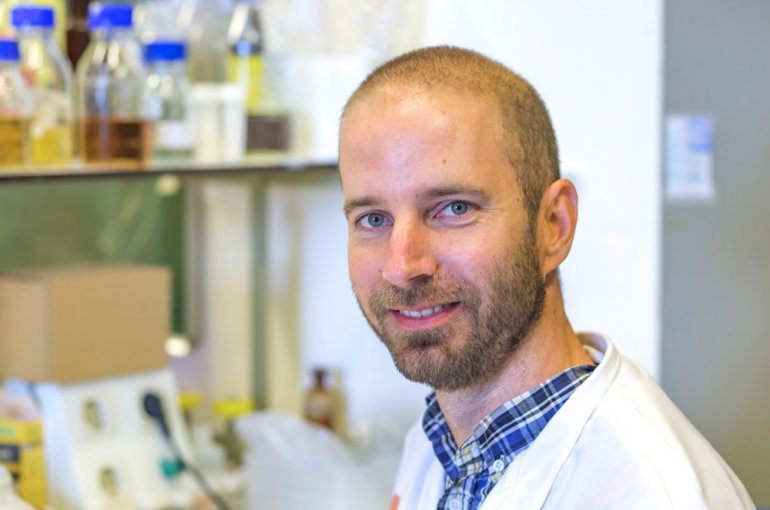“Mushrooms always used to fascinate me as a child”
Robin Ohm receives ERC Starting Grant

Robin Ohm is a familiar name at Utrecht University. He earned his Master’s in Biology here, and then earned a PhD on genetic research into mushroom-forming fungi. He then went to California to work for four years as a bioinformatics specialist at the Joint Genome Institute. For the past two years, he has been back in Utrecht, and with his new ERC Starting Grant of 1.5 million euros he has the opportunity to set up his own fundamental research programme.
“Mushrooms always used to fascinate me as a child. And during my studies, I found out about the many opportunities presented by fungi. For example, they can grow into a mushroom, but they can also produce the effective agents for antibiotics or biofuels.” Ohm will specifically focus on the mushroom-forming fungus Schizophyllum commune, commonly known as the ‘split gill’ mushroom.
Unique fan shape
Schizophyllum commune can be found in wooded areas around the world. “We’ve built up an impressive collection of strains here in Utrecht.” Ohm explains that the split gill presents many benefits for use in research. “In contrast to most other mushroom-forming fungi, we know the exact circumstances under which we can grow them. Plus, their entire genome has been sequenced, which means that we have unravelled the sequence of its DNA. So the split gill lends itself particularly well to genetic research.”
Genetic network
The many strains of the split gill mushroom display considerable diversity, both as to their appearance (phenotype) and their genetics (genotype). For example, some strains are sensitive to CO2, while others are not. In his research, Ohm hopes to identify the genes that differ between the strains and that are responsible for certain characteristics. “At the genetic level, the strains can differ by up to 15%; that is exceptionally high.”
In addition to identifying genes, Ohm studies the role played by transcription factors, 350 of which are present in the split gill. These factors regulate the expression of genes. “By switching them off one by one, we can observe what function they have. Altogether, this research will produce an overview of the genetic network of mushroom formation.”
Varied work
Ohm can put his experience gained in California to good use in his research. “Bioinformatics is an increasingly important field in Biology today. And yet, you still have to go to the lab for confirmation of your analysis. That’s what makes the work so varied.” Using computational studies, he compares the genetic material of the various strains and analyses how the genes are expressed. In the laboratory, he examines the actual effects of the mutations on the fungi’s characteristics.
Multifunctional fungi
His goal is to eventually arrive at a genetic model for mushroom-forming fungi. The question is of course why it is important to conduct research into the formation of mushrooms. Ohm has no fewer than three different reasons. “First, we live in a world that faces increasing food shortages. Mushroom formation often occurs on agricultural waste, and in so doing it converts low-quality material into food. Research into the genetic characteristics of the split gill provides us insight into how we can grow other, perhaps more nutritious, mushrooms.
Secondly, it is possible to use fungi to protect plant health. Mushroom-forming fungi have an especially beneficial symbiotic relationship with plant roots, which results in the exchange of nutrients. And finally, fungi produce metabolites, which are the active ingredients in antibiotics, for example.”
All expertise in one place
According to Ohm, Utrecht is the ideal place to conduct research on fungi. “We have all of the expertise in one place here. The research group led by Professor Han Wösten is considered one of the best in the world, and with the CBS-KNAW Fungal Biodiversity Centre just around the corner, the possibilities are endless. I also collaborate with the recently founded Utrecht Bioinformatics Centre. There is relatively little research being conducted globally on the genetics behind mushroom formation. I plan on rectifying that over the next five years.”

